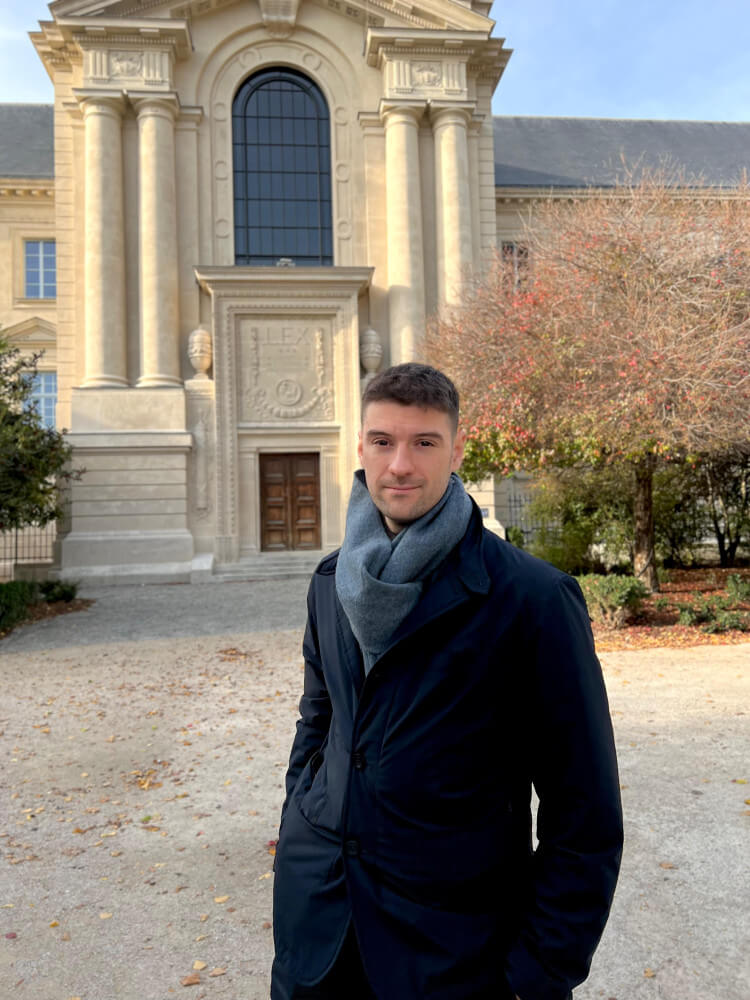Als Continuous Improvement Engineer ben jij de verbindende factor tussen verschillende afdelingen (horizontaal) en managementlagen (verticaal), terwijl je een proces verbeterende mindset behoudt.
Alstom & TMC both contribute to safe commuting for millions of people
From the mid-1990s, just under two hundred NS intercitytrains are driving across the Netherlands. Because they need to be able to add another 25 years to that, Alstom was asked to replace the diagnosis computers of these trains. Also, it turned out the software needed renovation, for which TMC was asked to join. The project started early 2020 and first tests are taking place in the summer of ‘22. In this article Roger Hacking (director TMC Software/TMC High Tech Systems), Tino Lourens (system architect TMC) and Erik-Jan Laret (project engineering manager Alstom) tell you all about the project and their collaboration.

When parties in transport are faced with a mobility challenge, there is a big chance Alstom will help and guide them. They do this with digital mobility systems that are efficient and more environmentally friendly. It is there for not surprising the Dutch Railways asked them to replace the hardware of the diagnosis system of their 176 intercity trains. Because the software also had to be renewed, the help of TMC was asked. Roger: “Alstom initially came to us because they were looking for a software team lead. During discussions with Alstom's R&D director, Ronald van Amstel, it became apparent that they had insufficient in-house resources to supervise and implement this project. TMC did have the right people and worked on this project with six employeneurs for two whole years.” Erik-Jan: "I was positively surprised by how well the collaboration went. Due to corona, we worked remotely and did a lot virtually via Teams. There were weekly appointments and short lines. We could always reach each other quickly. Due to working from home, there was hardly any travel time and we were able to put these hours to use for this project.”
Driving safely
“This project revolved around a very comprehensive diagnostic system of the train that had to be replaced, an important part of the trains. The current one was getting old, which meant the failure rate increased and parts became more and more difficult to obtain. In order to keep the intercity trains running safely in the next few years, the hardware, operating system and part of the software had to be renewed. The diagnosis system, also called a central computer, collects information, such as a toilet door that is open or closed, a defective door or a train set that is disconnected or coupled, stores this information and sends it to the machinist. Before he takes off, he checks whether everything is in order,” says Tino. “If you compare it to a house, the initial question was whether we could lift the outside and remove everything that was underneath: from foundations to pipes and internet cables. To then build a new foundation, put back the outside and connect everything again. The idea behind this was the driver didn’t have to learn anything new. That turned out to be difficult.” Erik-Jan: “What was in the trains was already made in the 1990s and is now no longer available. So, a new computer that could run largely the same software was needed. Based on our input, TMC rewrote part of that software. For the rest, we have done our best to maintain as much as possible.”
Large-scale operation
The new central computer and its software are, as it were, tied together so they can transfer all data properly. You can link up to six trains and connect three computers which they communicate through with each other. This ensures all information reaches the driver properly. “The NS is planning individual trains on all routes in the Netherlands. Today, train set #128 runs from Den Helder to Maastricht but, for example, tomorrow will be planned on the route from Utrecht to Groningen. A train does not always run in the same composition. Some are put into maintenance. It is therefore extra important computers work properly. In theory, a driver can also drive without the diagnosis system. If this fails, he will no longer receive any information about what is happening in the train. In a manner of speaking, he has to go outside to see if all doors are actually closed,” says Roger. “We knew the computers were no longer tenable and the NS had to adapt their trains to anticipate the future. TMC updated the new computer software application so the trains can travel safely for another 25 years.” Tino adds: “It is a large-scale operation to overhaul the 176 intercity trains. The challenge facing the NS is trainsets with the new and old system cannot be linked. For this, they must replace the units in all trains as soon as possible. The period of Christmas 2022 is planned for this, because that is a period in which not all trains are needed for the timetable. However, it remains a huge logistics operation, which will be carried out by NS itself.”
Proof of concept
“Our plan was to take one part out of the software system – which consists several modules – and work with that. We call this a proof of concept. We look at the existing problems for one module and based on those findings we see whether it is doing what we expect”, says Roger. “We started with three, but ended up working with six men on this project for two years.” Tino: “In theory, the code of the software should remain the same, but function in a different environment and under a different operating system. Regarding the development, we therefore looked at the old platform: what is there and what do we encounter. But also, what no longer works, what needs to be replaced and which parts have to be converted by hand. This gave us an insight on how good or bad the system was. And with that we continued working on the other modules. In the past, doors were replaced after they had opened and closed 10.000 times, so to speak. Today, data is used to see how the doors work. We adjust things based on that data, among other things.” Erik-Jan adds: “In close consultation we were always able to discuss which approach was necessary. For example, testing turned out to be more work than we initially thought. It was also unclear who would do these. In the end, TMC added more people to the team so they could pick up a large past.”
Millions of people
Roger: “If everything goes according to plan, the implementation will take place at the end of 2022: 176 trains will be provided with new hardware and software in only one week. A huge job. But one that ensures the intercity trains will continue to run for years!” Erik-Jan: “The entire system has been shown in a test set-up to the NS and they were very pleased. Now it's about the finishing touches and testing the system on the trains. When you see a train driving, you know it ensures safe commuter traffic for millions of people. How great is it to know you contributed to that? It's nice the TMC team looks at it the same way.”

Als Mobile Software Engineer speel je een cruciale rol in de end-to-end ontwikkeling van mobiele applicaties en draag je bij aan elke fase van de productlevenscyclus.

Stuur ons een bericht voor mogelijkheden, samenwerkingen of vragen. We komen graag met je in contact!




